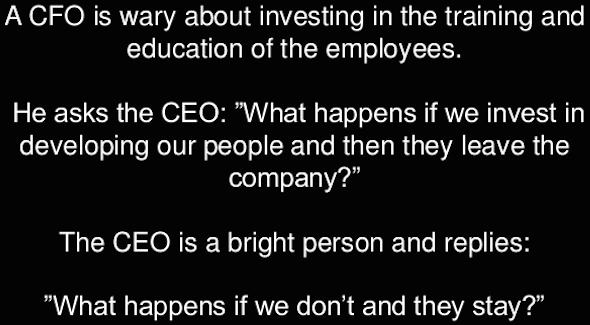Think about your liquor cabinet. Now think about that tired, dusty bottle of “Old Crow” that’s sitting on the bottom shelf. Something you glance over every once in a while but never dream of opening it or bringing it out of the shadows and into the light of day.
Pretty similar to your company’s mission statement? You felt like you had to put one together but haven’t looked at it for years. You probably can’t even quote the first sentence of it.
Well, you’re not alone. Many companies feel the need to deliver a mission statement and most do. The problem is they lose focus, make the statement way too long for any of their employees to remember, and once it’s done, house it on their web site or in a company document without ever referring to it.
If it’s not part of your daily routine and clear to your employees, then what good is it? That’s why we believe in Simon Sinek’s model – we believe that people don’t buy what you do, they buy why you do it. Your why should be concise, simple and straight to the point. It has to answer several questions, most importantly, why do you get out of bed every morning and do what you do and why does your company exist? With all the competition in many categories you have to make your brand stand out. Your why can help do just that.
So, find your why, communicate it both internally and externally and see how your culture and your business changes.
I know our why – “We believe every company has a deeper purpose, and it’s our job to find out what that is.” If you’d like us to help you figure out your why, just reach out. It’s what we do – and we’re good at it.
WIN A FREE WHY BOOK
Plus, if you fill out the form below, you’ll be entered to win a copy of Simon Sinek’s book Start with Why: How Great Leaders Inspire Everyone to Take Action.
[gl-hs-form form_id=’d6fdfd54-f1ca-45ed-9aa4-1934fbba4cfa’]

